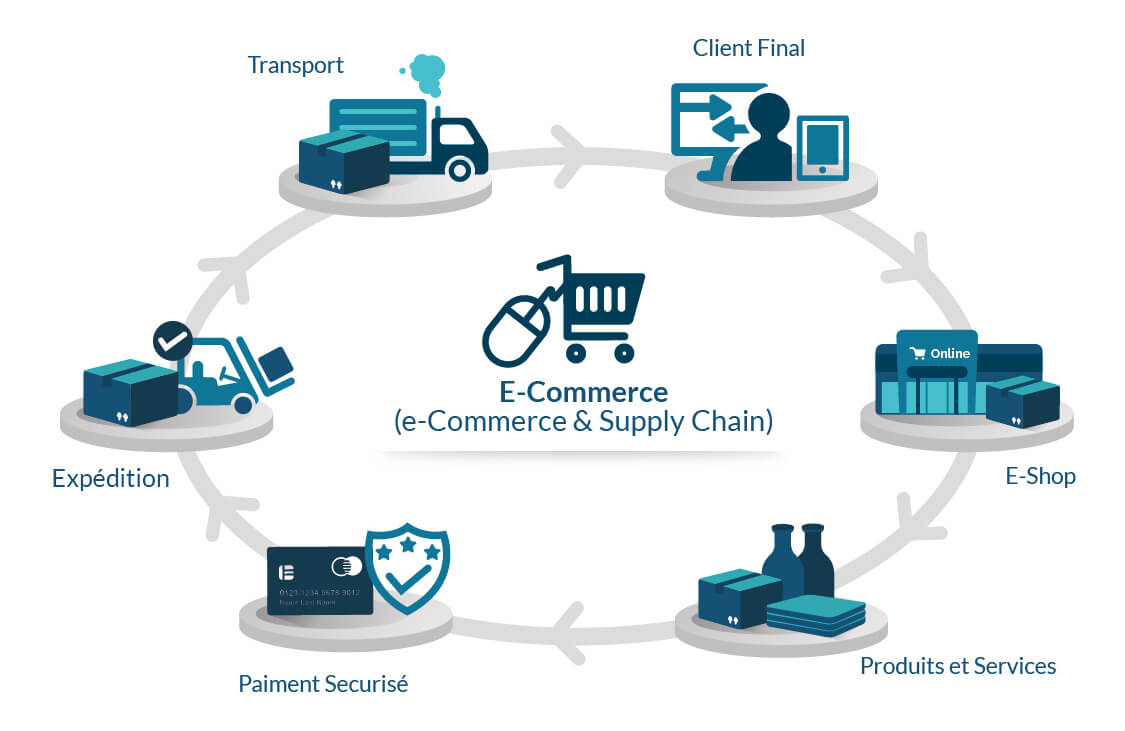E-Commerce Impact Supply Chain Management

E-commerce has a significant impact on supply chain management, transforming traditional processes and presenting both opportunities and challenges for businesses. Here are some ways in which e-commerce affects supply chain management:
Demand Forecasting and Inventory Management: E-commerce introduces greater demand volatility and seasonality, as consumer preferences and buying behavior can change rapidly. This makes demand forecasting and inventory management more complex, requiring businesses to leverage data analytics, machine learning, and predictive modeling to anticipate demand accurately and optimize inventory levels.
Fulfillment and Distribution: E-commerce typically involves smaller, more frequent orders compared to traditional retail, necessitating changes in fulfillment and distribution processes. E-commerce companies may employ strategies such as multi-warehouse fulfillment, dropshipping, and third-party logistics (3PL) providers to improve order fulfillment speed and efficiency.
Last-Mile Delivery: The "last mile" of delivery, from distribution centers to the customer's doorstep, is a critical component of the e-commerce supply chain. E-commerce companies must optimize last-mile delivery operations to meet customer expectations for fast and reliable shipping, often relying on technology solutions like route optimization, real-time tracking, and delivery drones or autonomous vehicles.
Reverse Logistics: E-commerce transactions often involve higher return rates compared to traditional retail, as customers have the option to return products more easily. Managing reverse logistics, including processing returns, restocking inventory, and refurbishing or disposing of returned items, is a significant challenge for e-commerce companies that requires efficient processes and effective inventory management.
Supply Chain Visibility and Transparency: E-commerce relies on real-time visibility into supply chain processes and inventory levels to ensure accurate order fulfillment and meet customer expectations. E-commerce companies leverage technologies such as inventory management systems, barcode scanning, RFID tracking, and blockchain to enhance supply chain visibility and transparency.
Collaboration and Integration: E-commerce encourages closer collaboration and integration among supply chain partners, including suppliers, manufacturers, distributors, and logistics providers. E-commerce companies may implement collaborative planning, forecasting, and replenishment (CPFR) initiatives and invest in supply chain integration technologies to streamline communication and coordination across the supply chain.
Globalization and Market Expansion: E-commerce enables businesses to reach global markets and expand their customer base beyond geographical boundaries. Globalization introduces additional complexities in supply chain management, including international shipping, customs clearance, currency exchange, and compliance with local regulations and trade agreements.
Supply Chain Resilience and Risk Management: E-commerce companies must proactively manage supply chain risks, including disruptions caused by natural disasters, geopolitical events, supply chain disruptions, and cybersecurity threats. Building resilient supply chains involves diversifying suppliers, implementing contingency plans, and investing in risk mitigation strategies.
Overall, e-commerce has a profound impact on supply chain management, driving the need for agility, innovation, and collaboration across the entire supply chain to meet the demands of the digital economy and deliver exceptional customer experiences.
Thank you
